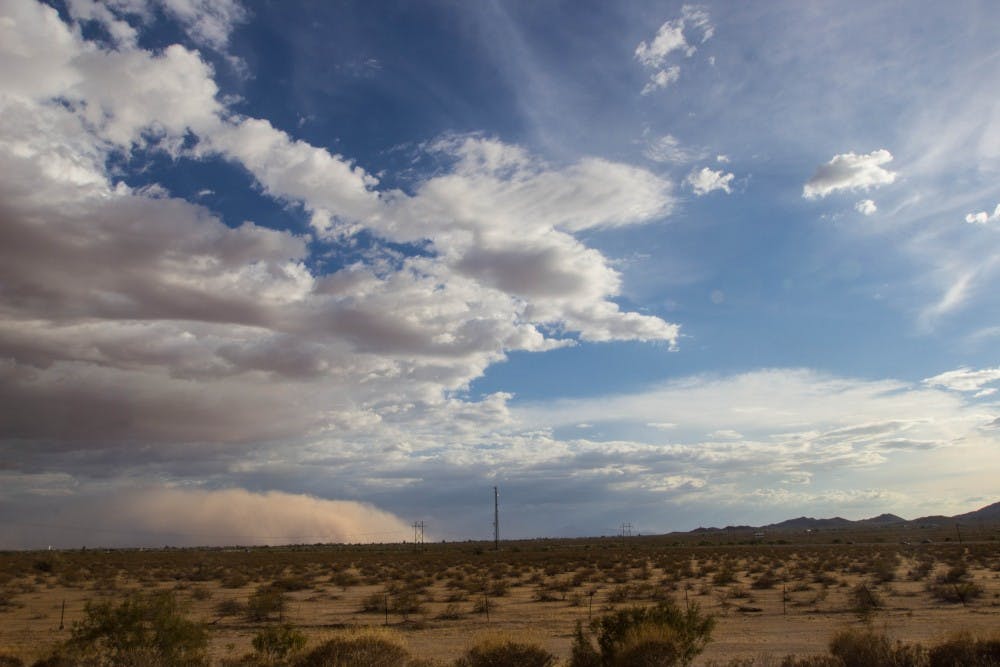Scarcely a day has gone by since July started without a dust storm or flash flood warning for some part of the Valley, but while the weather may seem extreme, experts say it's nothing unusual.
Arizona's monsoon season, which runs from July to September, may seem odd to students or visitors from other states with different precipitation cycles, said Randall Cerveny, a professor at ASU's School of Geographical Sciences and Urban Planning and the director of the University's meteorology program.
"This is the time of year when we get these kinds of storms," he said.
Monsoon thunderstorms result from wind and moisture blown in from the Gulf of California, he said. The Arizona monsoon season typically starts with dry thunderstorms or dust storms.
These early dust storms, called haboobs, seem to have been worse during the past few years, in part because of the national economic recession, he said. Many companies tore up large sections of ground to prepare for building before it began, but poor economic conditions halted construction and left areas with loose dirt ripe for being blown about by monsoon winds. Bad haboobs during the past few years, like the mile-high wall of dust that traveled between Tucson and Phoenix on July 5, 2011, tend to happen in the early weeks of monsoon season before there's much moisture present for precipitation. "The time when we see these big haboobs is the first few storms, when there's lots of wind, but no rain," Cerveny said.
As the season continues, residents should see fewer dust storms, he said.
However, with more moisture, storms can become more dramatic.
"Moisture is like the Duracell battery of thunderstorms," Cerveny said. "We've got a lot of moisture now, so Mother Nature can bake up big thunderstorms."
Arizonans should expect continued monsoon thunderstorms for the next month and a half, and they'll begin dropping off in mid-September, he said.
Until then, Valley residents will lose their mantra, "At least it's a dry heat."
"Outside, it feels like Orlando as opposed to Phoenix right now," Cerveny said.
Arizona's thunderstorms are caused by convection of surface heat rather than wind currents, as seen in other states. Because of this, monsoon thunderstorms are highly localized —– a storm can have a torrential downpour in Tempe, while Sky Harbor just a few miles away stays completely dry.
This heavy localized rain, along with the Valley's vast stretches of pavement and non-absorbent soil, makes streets prone to flash flooding.
Just 1 foot of water moving at 10 miles per hour can cause a car to float, Cerveny said, and the same relatively small water level could easily knock pedestrians over, carry them with the current and drown them. No matter how used a person might be to driving in the rain in other places, nobody should be going out in flash floods.
They're typically clear within about 30 minutes, making the safety risk far more important than any seemingly urgent errand.
"It's better being a half hour late than being dead," Cerveny said.
Business management junior Braden Cooley has been outside in a few of the storms during the past week, and he said he wished drivers would be more careful.
"Walking in a monsoon is fine, but driving, definitely just slow down," he said. "There's a lot of water and low visibility."
Reach the managing editor at julia.shumway@asu.edu or follow @JMShumway on Twitter.
Like The State Press on Facebook and follow @statepress on Twitter.




